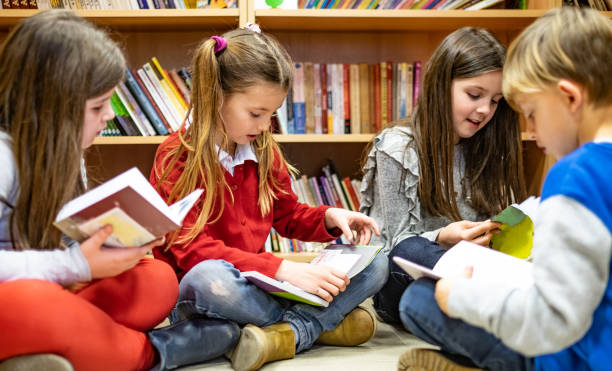Traditional and alternative school systems
The world is changing rapidly and opinions about what education should be like are constantly changing. Due to the fact that traditional education does not attach much importance to individual differences and is based on a system in which the subjects dictated by the teacher are listened rather than experienced, alternative education systems have recently begun to be adopted more and more both in the world and in our country. In fact, the beginning of alternative education systems is quite old, generally in the post-World War II period.
How do alternative education models multiply our children? What are the common features that differ from traditional education?
Alternative education values individual differences.
Alternative education embraces the idea that there is no single best way to learn. The idea that “everyone learns differently” is one of the main contributions of the alternative view.
Alternative schools are based on the learning process by living and experiencing. The more children participate in learning by using their sense organs, the more permanent learning occurs.
Learning takes place by being in practice rather than theoretical knowledge.
In the learning process, the process is more important than the result.
Let’s take a closer look at the different systems:
Montessori approach:
It is a child-centered alternative education program.
One of the cornerstones of Montessori education is the prepared environment.
The purpose of the training program; self-confidence, taking responsibility, knowing and doing what one wants, independence, concentration, orderliness, cooperation and respect for others.
Children choose independently from the prepared surrounding Montessori materials according to their individual interest and inclination.
Montessori schools do not follow the same daily schedule for all children. Children work with whatever material they want, when they want, where they want.
Children are given the opportunity to repeat as many times as they want.
There is a mixed age application in Montessori classrooms. Young children take older children as role models and there is peer teaching. Older children, on the other hand, fully internalize the learning process themselves, while teaching them to use the materials as well as to learn to show empathy to younger children.
One of the ways to achieve the goals stated in Montessori classrooms is to let the child experience the pleasure of learning instead of forcing the child; the second is to help improve the child’s learning mechanism.
In this approach, error control in materials occurs when the child finds his own mistake. No need for warning, approval or correction from anyone else. The Montessori approach allows the child to self-correct. Thus, independence from the adult occurs naturally.
The tools and equipment used in this education system are specific to the system. All materials in the classroom are there to support the child’s developmental characteristics from different aspects. The materials used vary according to each age level.
What is the Waldorf Approach?
The main purpose of the approach, which was developed by Rudolf Steiner in 1919, is to educate the child by focusing on all developmental areas.
The Waldorf approach is game-centered, especially up to the age of 7.
The purpose of the Waldorf approach is; It is the ability of children to develop socially, emotionally, spiritually, morally, physically and mentally in a balanced and versatile way. It also places special emphasis on promoting the individuality, self-confidence and integrity of children. In this approach, what they learned with art, music and movement; It is thought that they enrich their lives by discovering and experiencing. It encourages children to gain a sense of social belonging by helping and respecting each other rather than competing with each other.
The mixed age group is also valid in the Waldorf approach. Within the framework of certain activities and routines, children of different age groups are provided with education in the same classes and continue for several years with the same teacher.
In the program, where there is intense garden time, it is aimed to make children intertwined with nature and to create nature awareness and love. Even if the weather is rainy every day, garden games are included in the program. When starting the day in the morning, children move their bodies enough by running, jumping and climbing.
All activities are intended to be planned and implemented in creative ways.
Eurithmy forms an important part of the Waldorf approach. It is the children’s rhythmic dance and movements accompanied by a soothing music, story or poem sung under the leadership of their trainers and in a calm voice.
Children are given the opportunity to observe nature without being thrown into the turmoil of modern life, and in addition to these, songs and poems are taught and stories are read, which will bring the love of nature.
Along with primary school, fields such as mathematics and science have an important place in the program. The teacher prepares the experiments, motivating the children to carefully observe the experiments and discuss what they find.
Reggio Emilia Approach:
The Reggio Emilia approach was developed to encourage children to research and teachers to direct children to research.
Reggio Emilia schools, known as project-centered, include many preschool programs. Projects are selected according to the interests of the children and the curriculum is created. For example, to a student who asks how a flower he finds in the garden grows, the teacher works on finding the answer with the children, rather than answering directly. They create a garden with children and research plants. The role of the teacher is to set the framework and enable children to explore and liberate in it.
It is important to document observations of children and to store written, video and photographs.
These works, which we can call a portfolio, are created together with the children during the year and are continued by going over them.
